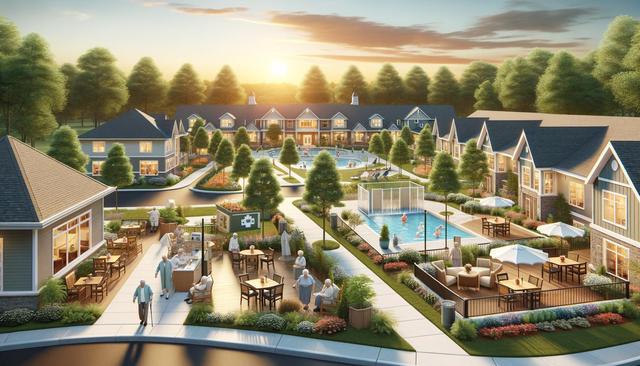
5 Top Benefits Of Today’s Senior Living Communities
Enhanced Wellness and Health Programs
One of the most significant advantages of modern senior living communities is the strong emphasis on health and wellness. These communities are no longer just about providing basic care—they now offer extensive wellness programs that cater to both physical and mental health. From on-site fitness centers equipped with senior-friendly machines to guided yoga and tai chi classes, residents have access to a variety of ways to stay active and healthy. Many communities even provide personal wellness plans developed by healthcare professionals, which may include routine health screenings, nutrition counseling, and physical therapy. These initiatives not only help residents maintain their independence but also contribute to a higher quality of life. Additionally, mental wellness is supported through classes, therapy sessions, and memory care programs, ensuring that cognitive health is not overlooked. Today’s senior living environments are more proactive, focusing on prevention and overall well-being rather than just treatment.
Vibrant Social Opportunities
Social engagement plays a vital role in senior health, and today’s communities are designed to foster a vibrant, connected lifestyle. Isolation is a common concern among older adults, but senior living communities tackle this head-on by encouraging regular interaction through a diverse range of social activities. These might include:
- Group outings to local cultural events or restaurants
- Art and craft workshops
- Book clubs and discussion groups
- Game nights and movie screenings
These social opportunities not only foster friendships but also help combat loneliness and depression. Having consistent access to peers and community events creates a sense of belonging, which is essential for emotional well-being. Moreover, many communities have common areas such as lounges, libraries, and cafés that serve as natural gathering spots for residents, making it easy to connect with others on a daily basis.
Maintenance-Free Living
Another major benefit of senior living communities is the convenience of a maintenance-free lifestyle. Residents no longer need to worry about the burdens of homeownership, such as yard work, repairs, or even daily chores. Most communities offer housekeeping, laundry services, and meal preparation, allowing residents to focus on the activities they enjoy. This level of support can be especially beneficial for those who may have mobility challenges or simply want to spend more time on hobbies and personal interests. In addition to physical maintenance, many communities also handle administrative tasks like scheduling transportation and coordinating medical appointments. This comprehensive support system reduces stress for both residents and their families, ensuring peace of mind and more time for meaningful experiences.
Safe and Secure Environment
Safety is a key priority in senior living communities, and today’s facilities are carefully designed with this in mind. Features such as secured entrances, emergency call systems, and 24-hour staff availability provide a reassuring environment for residents and their families. Living in a secure setting not only reduces the risk of accidents or emergencies going unnoticed but also enables quicker response times in case of need. Furthermore, the physical layout of senior living residences often includes:
- Grab bars and non-slip flooring
- Wheelchair-accessible spaces
- Well-lit pathways and common areas
- Elevators and ramps for ease of movement
These design elements help prevent injuries and promote independent mobility. In addition to physical safety, emotional and psychological security is nurtured through the presence of trained staff who are attentive and compassionate. This combination of physical and emotional security makes senior living communities a comforting choice, especially for individuals with health considerations or family members living far away.
Customized Levels of Support
Modern senior living communities offer a wide range of care options tailored to individual needs. Whether a resident is fully independent or requires daily assistance, these communities are equipped to provide the appropriate level of support. This flexibility allows individuals to age in place, transitioning smoothly between levels of care as their needs evolve. The available services can include:
- Independent living with minimal staff intervention
- Assisted living with help in daily activities
- Specialized memory care for cognitive conditions
- Short-term rehabilitation services
What makes this approach particularly beneficial is the continuity of care. Residents don’t need to relocate as their health changes, which supports emotional stability and comfort. The ability to receive personalized attention also ensures that each individual’s preferences and routines are respected, fostering a sense of dignity and autonomy. Families often find comfort in knowing their loved ones are in a supportive environment where care can be adjusted as needed without disruption.
Conclusion: A Modern Approach to Aging Well
Today’s senior living communities go far beyond traditional models of care. With a focus on wellness, social connection, convenience, safety, and personalized support, these communities are redefining what it means to age gracefully and independently. For older adults and their families, this modern approach offers reassurance, improved quality of life, and a path to aging that emphasizes engagement, health, and fulfillment. As the needs and expectations of seniors continue to evolve, so too do the communities designed to support them every step of the way.

